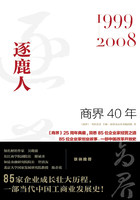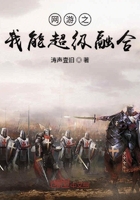38.Cohendet P,Llerena P.Learning,technical change,and public poli‐cy:How to create and exploit diversity [A].Edquist C.Systems ofinnovation:Technologies,institutions and organizations [C].Lon‐don:Routledge,1997.
39.Cooke P,Morgan K.The network paradigm:New departures in cor‐porate and regional development [J].Environment and Planning,1993,(8):7‐34.
40.Corner P,Kinicke A,Keats B.Integrating organizational and individ‐ual information processing perspectives on choice [J].OrganizationScience,1994,5(3):294‐308.
41.Corno F,Reinmoeller P,Nonaka I.Knowledge creation within indus‐trial systems [J].Journal of Management and Governance,1999,(3):379‐394.
42.Cowan R,David P,Foray D.The explicit Economics of knowledgecodification and tacitness [J].Industrial and Corporate Change,2000,9(2):211‐253.
43.Cowan R,Jonard N.Network structure and the diffusion of knowl‐edge [J].Journal of Economic Dynamics and Control,2004,28:557‐1575.
44.Crevoisier O.The innovative milieus approach:Toward a territorial‐ized understanding of the economy?[J].Economic Geography,2004,80(4):367‐379.
45.Cyert R,March J.A behavioral theory of the firm [M].EnglewoodCliff,NJ:Prentice‐Hall,1963.
46.Daft R,Weick K.Toward a model of organization as interpretive sys‐tems [J].Academy of Management Review,1984,9:284‐295.
47.Daghfous A.An empirical investigation of the roles of prior knowl‐edge and learning activities in technology transfer [J].Technovation,2003,24:939‐953.
48.Dahl M,Pedersen C.Knowledge flows through informal contacts inindustrial clusters:Myth or reality?[J].Research Policy,2004,33:1673‐1686.
49.Davis J,Eisenhardt K,Bingham C.Developing theory through simu‐lation methods [J].Academy of Management Review,2007,32(2):480‐499.
50.Desrochers P.Geographical proximity and the transmission of tacitknowledge [J].The Review of Austrian Economics,2001,14(1):25‐46.
51.Dess G,Beard D.Dimensions of organizational task environment [J].Administrative Science Quarterly,1984,29:51‐73.
52.Dess G,Robinson R.Measuring organizational performance in theabsence of objective measures:The case of the privately‐held firm andconglomerate business unit [J].Strategic Management Journal,1984,5:265‐273.
53.Dewar R,Whetten D,Boje D.An examination of the reliability andvalidity of the Aiken and Hage scales of centralization,formalization,and task routineness [J].Administrative Science Quarterly,1980,25:120‐128.
54.Dosi G.Technological paradigms and technological trajectories [J].Research Policy,1982,(11):147‐162.
55.Ducan R.Characteristics of organizational environments and perceiveduncertainty [J].Administrative Science Quarterly,1972,2:409‐443.
56.Durkheim E.Sociology and philosophy [M].New York:Free Press,1974.
57.Eisenhardt K,Martin R.Dynamic capabilities:What are they?[J].Strategic Management Journal,2000,21:1105‐1121.
58.Eisenhardt K.Building theories from case study research [J].Acade‐my of Management Review,1989,14(4):532‐550.
59.Eisenhardt K.Better stories and better constructs:the case for rigorand comparative logic [J].Academy of Management Review,1991,16(3):620‐627.
60.Engardio P,Dexter R,Brain B.The China price [J].BusinessWeek,2004,(3911):102.
61.Enright M.Regional clusters and firm strategy [A].Chandeler A,Hagstrom P,Solvell O.The dynamic firm:the role of technology,strategy,organization,and regions [C].New York:Oxford Univer‐sity Press,1998.
62.Feldman M.The new economics of innovation,spillovers and ag‐glomeration:a review of empirical studies [J].The Economics of In‐novation and New Technology,1999,8:5‐25.
63.Feldman M.Location and innovation:the new economic geography ofinnovation,spillovers,and agglomeration.[A].Clark G,FeldmanM,Gertler M.Oxford handbook of economic geography [C].Ox‐ford:Oxford University Press,2000:373‐394.
64.Fiska S,Taylor S.Social cognition [M].New York:McGraw‐Hill,1991.
65.Florida.Toward the learning region[J].Futures,1995(27):527‐536.
66.Foss N.Higher‐order industrial capabilities and competitive advan‐tage [J].Journal of Industry Studies,1996,3(1):1‐20.
67.Freeman S.Cultural congruence,strength and type:relationship toeffectiveness [J].Research in Organizational Change and Develop‐ment,1991,1991(5):23‐58.
68.Freeman C.The economics of industrial innovation(2 ed.)[M].Cambridge,MA:MIT Press,1982.
69.Galaskiewicz J,Zaheer A.Networks of competitive advantage [A].Andrews S,Knoke D.Research in the sociology of organizations[C].Stamford:JAI Press,1999:237‐261.
70.Garud R,Nayyar P.Transformative capacity:continual structuringby intertemporal technology transfer [J].Strategic ManagementJournal,1994,15(5):365‐385.
71.Garud R,Kumaraswamy A.Technological and organizational designsfor realizing economies of substitution.Strategic Management Jour‐nal,16(Speical Issue):93‐109.
72.Gertler M.Tacit knowledge and the economic geography of context,or the undefinable tacitness of being(there) [J].Journal of EconomicGeography,2003,(3):75‐99.
73.Gilbert N,Pyka A,Ahrweiler P.Innovation networks:a simulationapproach [J].
74.Giuliani E.The structure of cluster knowledge networks:uneven andselective,not pervasive and collective [J].SPRU Working Paper,2005.
75.Giuliani E,Bell M.The micro‐determinants of meso‐level learningand innovation:evidence from a Chilean wine cluster [J].ResearchPolicy,2005,34(1):47‐68.
76.Glazer R,Weiss A.Marketing in turbulent environments:decisionprocesses and the time sensitivity of information [J].Journal of Mar‐keting Research,1993,30:509‐521.














